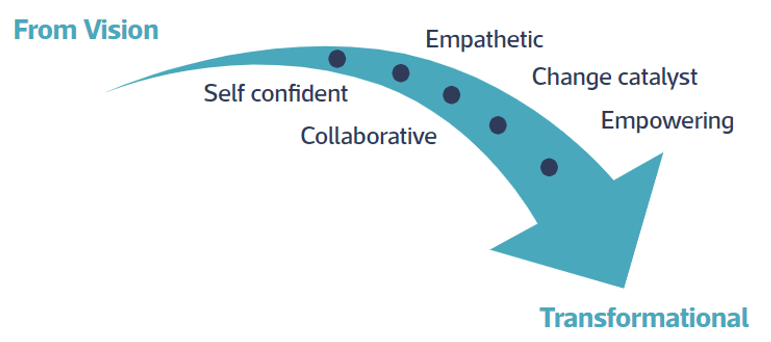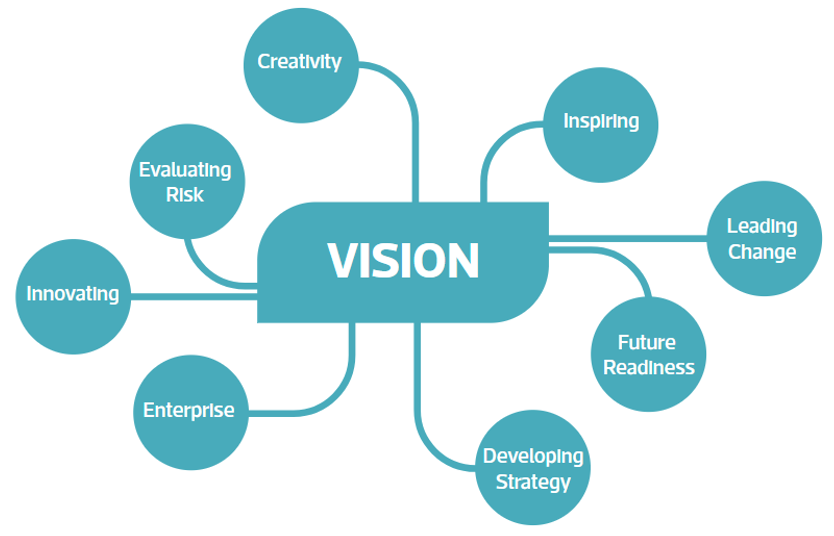Mention the term “Visionary Leader” and it might conjure up an image of a lone individual with a view of the future urging their followers to pursue it with them. Yet we know that this model of leadership is outdated and fails to capitalise on all the human resources of an organisation since the implied command and control structure would be too slow in achieving success in today’s competitive global environment. Does that mean that vision too is outdated? Absolutely not! We live in times where survival is dependent upon rapid evolution in sometimes hostile environments. The abilities of leaders to transform their organisations in challenging times is an essential characteristic and to do this effectively requires vision. This is supported by research on management styles which suggests those leaders who have a clear understanding of the business environment, clarity in what needs to be done and the skills with people to make it happen are the type of leaders we need today.
What is Leadership Vision?
An assessment of leadership styles in the US (Goleman,2000) suggested that one type of leaders which he terms authoritative, worked best and is successful at times of change or challenge. Central to this type of leadership Goleman suggests, is their visionary qualities. They are the leaders who can most successfully captivate the will of their team and lead when a clear direction is needed moving from what appears impossible to making it possible.
Avery (2004) adds that whilst a leader with vision needs a degree of charisma the ability to create and share a powerful vision is more important. The soft skillset of collaboration especially in problem solving and a desire to empower their team is essential if interdependence and independent working is to be fostered. This means that the role of the visionary leader changes from creative and innovator to facilitator, motivator and support whilst still helping to keep focus on vision.

The Practice of Leadership Vision
Freidman (2008) stated that “Leadership vision is an essential means for focusing attention on what matters most; what you want to accomplish in your life and what kind of leader you wish to be”. So beginning with a consideration of where you want to be means deep reflection to clarify your personal mission and what you want to achieve both professionally and personally.
To achieve your vision, you need the ability to dream the impossible but desirable and make it happen both for yourself and by leading change in your organisation. While the underpinning values may come from the authentic you, to achieve success you will need to practice creativity in order to develop vision, which you can share and lead others towards. Visionary leaders are not stuck in the past, either successes or failures because it is difficult to lead change if you are not living in the present. A visionary leader is a disrupter that is shaking the organisation and taking it out of established comfort zones showing enterprising skills more usually found in a new start or entrepreneurial context. The practices of leadership vision then, means having future readiness, being willing to take on new challenges in way that may not have been tried before and then innovating within their organisation or professional field of interest.
Whilst leading in the 21st century may require boldness and commitment to a vision which you believe and own, as a leader you will have to ignite the spark in others, inspiring them to take part and commit to it.
Leadership vision sounds exciting and somewhat bold and might begin with an individual’s dream. Like a stone thrown into a pool of water the ripples of the dream will spread to your team, but to continue the metaphor, ripples die away if nothing else happens. In organisational terms, successful leaders must be more than just words and big ideas. They have to walk the walk as well as talk it. This means that taking the vision into implementation, making it real, tangible and workable means a visionary leader must not neglect developing strategy and evaluating risk.
The 21st century model of leadership vision has come a long way from its inception and requires a rather more than a bright idea, it needs an ability to communicate that vision, mould, adapt it and experience its success as a shared endeavour.


